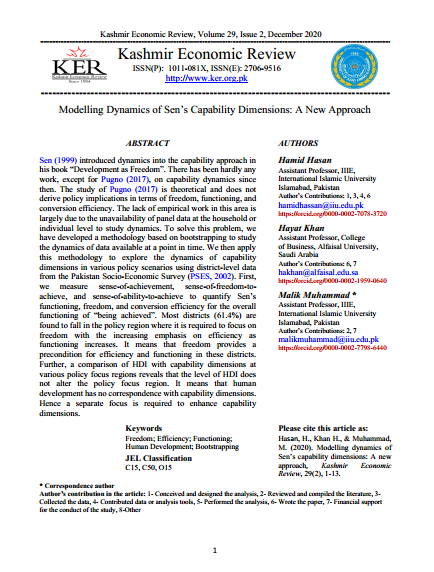Modelling Dynamics of Sen’s Capability Dimensions: A New Approach
Contenu principal de l'article
Résumé
Sen (1999) introduced dynamics into the capability approach in his book “Development as Freedom”. There has been hardly any
work, except for Pugno (2017), on capability dynamics since
then. The study of Pugno (2017) is theoretical and does not
derive policy implications in terms of freedom, functioning, and
conversion efficiency. The lack of empirical work in this area is
largely due to the unavailability of panel data at the household or
individual level to study dynamics. To solve this problem, we
have developed a methodology based on bootstrapping to study
the dynamics of data available at a point in time. We then apply
this methodology to explore the dynamics of capability
dimensions in various policy scenarios using district-level data
from the Pakistan Socio-Economic Survey (PSES, 2002). First,
we measure sense-of-achievement, sense-of-freedom-toachieve, and sense-of-ability-to-achieve to quantify Sen’s
functioning, freedom, and conversion efficiency for the overall
functioning of “being achieved”. Most districts (61.4%) are
found to fall in the policy region where it is required to focus on
freedom with the increasing emphasis on efficiency as
functioning increases. It means that freedom provides a
precondition for efficiency and functioning in these districts.
Further, a comparison of HDI with capability dimensions at
various policy focus regions reveals that the level of HDI does
not alter the policy focus region. It means that human
development has no correspondence with capability dimensions.
Hence a separate focus is required to enhance capability
dimensions.
Details de l'article

Ce travail est disponible sous licence Creative Commons Attribution - Partage dans les Mêmes Conditions 4.0 International.

